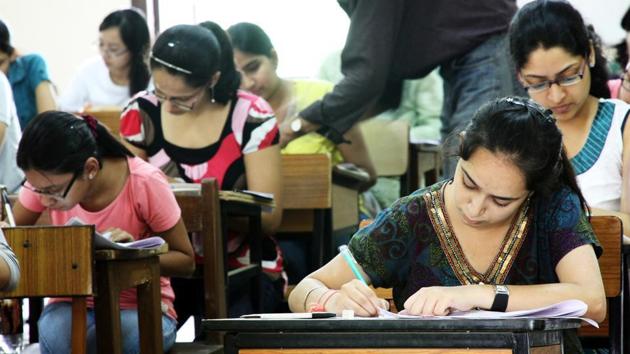Education loans: Importance of making informed borrowing choices and how educational institutes can help students
Affordable programs that meet the needs of students and educators both, while ensuring students understand financial implications of how they pay their college fees are essential to quash this barrier.
College is an indispensable part of education but can be a costly business. This makes the need for affordable higher education acute. College costs shouldn’t become a barrier to entry, yet they are one of the biggest deterrents to higher education. For those who don’t come from significant family money, a college education can seem out of reach. Affordable programs that meet the needs of students and educators both, while ensuring students understand financial implications of how they pay their college fees are essential to quash this barrier.

What is the role of educational institutes?
It is only natural then that parents and students are turning to education loans. The complex borrowing decisions that come with education loans make it essential for students to be well-informed about education loans. Educational institutes have a pivotal role to play here as they have the power to enable students to make better and informed borrowing decisions, by providing the right information at the right point in time. Making available loan applications, scholarships, and authoritative sources on cost are some ways educational institutes use to make the borrowing process easier.
Most leading banks in our country offer education loans. This amount is meant to cover fees and expenses mandatory for the completion of a course. Professional courses such as management and engineering in India and other foreign countries are also included under these loans.
Credit and interest rates
Loan amounts differ between banks; loans up to ₹15 lakh are sanctioned at the discretion of banks for studies within the country, 5% of the credit is financed by the applicant. For loans, up to ₹4 lakh, no margin or third party guarantor is required to be produced. For loans above ₹7.5 lakh, you are required to provide collateral for your loan to be approved. The collateral specifications vary depending on the educational institution’s policies.
Interest rates on an education loan usually range between 12 to 16%. The basic lending rate is from 9.15% onwards. Floating or fixed interest rates can be chosen for these loans. The government subsidises education loans with a tax reduction on the interest of the repayment amount.
Repayment period
Education loans can be taken for a period of 5 to 15 years depending on the bank policies. The repayment period largely depends on the employment of students after graduation, making it a huge responsibility for first-time borrowers. To make the repayment process smoother, lenders have the provision of a moratorium period (6 months to one year). This extension of time can be used to build a corpus. The money can be used to start paying off EMIs. It is advisable to start paying back the interest within their study period to ease the burden of debt. A moratorium period shouldn’t be confused with a grace period that is more commonly heard of. A grace period refers to the time when a payment is due and the billing cycle has ended. Grace periods are interest-free periods granted for repayment after which an interest is charged. A moratorium period differs from a grace period as the former is more like a deferment to payment allowed by the lender. It is usually a much longer period compared to a grace period, and interest can be paid during the moratorium period.
Banks Vs NBFCs
Banks and non-banking financial companies (NBFC) are major financing intermediaries in our country. An important detail to remember is that NBFCs cannot issue self-drawn cheques and demand drafts. Banks are an instrumental part of a country’s payment machinery and NBFCs are not part of these transactions. Banks are the lending bodies to be approached for education loans. NBFCs cater to people who do not have a bank license. NBFC are not authorised to create credit and do not offer transaction services. NBFC’s were founded to grant credit to the economically backward sections of society. Some people hold misconceptions regarding them being lending bodies for education loans, only banks can offer this service.
How and when to start paying back your loan?
Generally, student loans tend to continue for the next 10 years of the time from when you start earning. The actual amount of principal plus interest starts one year post the start of your job (this depends on the bank as well). One should make sure that they start paying the EMIs every month so as to make sure that the interest doesn’t go high.
Once a student knows that he has to start repaying his loan, he should plan his budgets. A realistic budget that he can actually stick to. There is another way of doing it. The other strategy is to use lump sum reimbursements, such as your income tax refund or your savings, directly towards repayment. But make sure, one doesn’t miss out on paying the loan amount on a regular basis.
An education loan is usually the first loan for a student, which gives them the opportunity to build a good credit score for future purposes. Higher education doesn’t only mean gaining mastery over a subject. It is meant to prepare students for better jobs and a meaningful, balanced life. When students are financially responsible and literate, they are able to improve their own financial capabilities and positively contribute to the community around them. This will even have an impact on the long-term recession that is plaguing all economies at large. Making wise financial decisions is an important aspect of that. Students can gain from getting started on developing this vital life skill at the college level.
Institutes that recognise the value of providing financial literacy to their students, and take necessary measure to do so stand out and above others that don’t provide these skills. With continued efforts and partnerships, institutes can help students navigate these critical decisions and improve outcomes for both parties.
(Dr Amit K Sinha is Director, Kirloskar Institute of Advanced Management Studies, Pune. Views expressed here are personal.)












